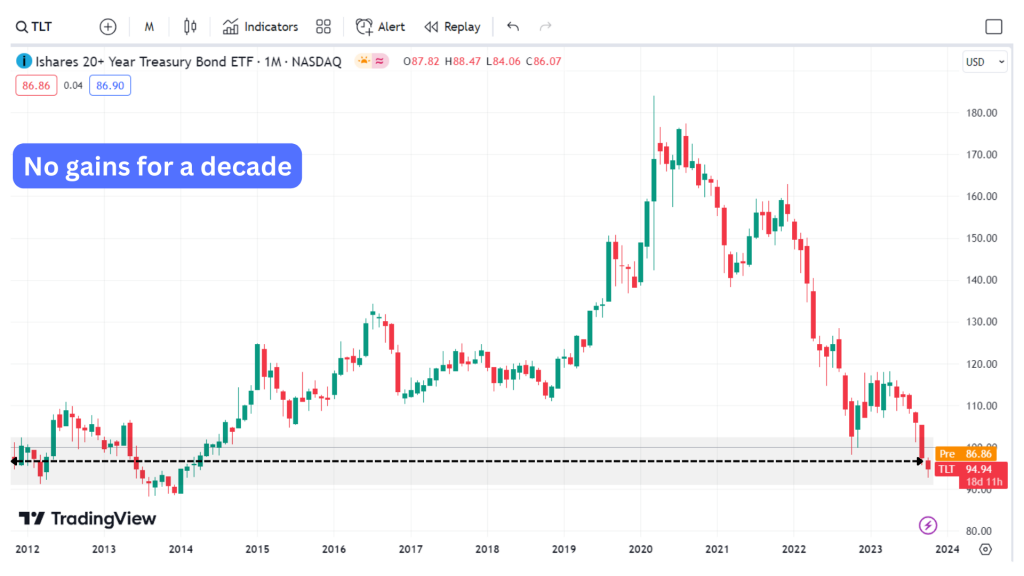The Importance of Proper Asset Allocation and Rebalancing
In this article, we try to emphasise the importance of proper asset allocation and rebalancing in an investment portfolio. We have tried to highlight the uncertainty of how different asset classes will behave over time and stress the need to have a diversified portfolio and regularly adjust the allocation to maintain a balanced mix.
One of the key points made is that past performance is not a guarantee of future returns. While historical data can provide some insight into the performance of different asset classes, it is impossible to accurately forecast their behaviour over the long term.
Let us take the case of iShares 20+ year Treasury Bond ETF that demonstrates this concept, showing that investments in a bond ETF (which is a debt instrument considered to be one of the safer asset classes by majority) in the US made ten years ago have not seen any significant growth, and the value has even been eroded by inflation.
What if you invested $100 in this Bind ETF 10 years ago

The example of investing $100 in 2011 and only having the same amount in 2023 highlights the risk of sticking to a single asset class without considering the potential for loss or insufficient returns. Inflation erodes the purchasing power of money over time, which means that the same amount of money will buy less in the future. Therefore, even if an investment has maintained its value nominally, its real value may have decreased due to the rise in prices.
To mitigate these risks, investors should consider employing proper asset allocation and rebalancing strategies. One may also consider a simplified allocation of one-third equity, one-third debt, and one-third real estate, although this allocation may vary depending on an individual’s circumstances.
Investors may also consider rebalancing which involves adjusting the allocation by taking profit from asset classes that have performed well and reinvesting it in those that have underperformed. This strategy may ensure that investors are not overly concentrated in a single asset class and helps to maintain a diversified portfolio. However, we would advise against blindly following this strategy without considering the long-term performance of the assets.
If an asset class consistently underperforms for an extended period, continuously reallocating profits from the well-performing assets into the underperforming asset class may result in missed opportunities for growth. It is crucial, therefore, to pay attention to the performance of each asset class and evaluate whether it is prudent to continue reinvesting in it. Using a common indicator such as a 200-week moving average to determine when an asset class starts to trend positively can be something investors may consider to start with. This approach allows investors to capitalise on opportunities for growth while maintaining a level of caution and risk management.
The key idea here is to avoid concentration in a single asset class and to continuously evaluate and adjust investment strategies based on the performance of each asset class. Nothing in the market is guaranteed and unexpected events can lead to prolonged periods of stagnation or decline. Therefore, it is essential to strike a balance between the desire for potential returns and the need for risk mitigation and prudent decision-making via asset allocation.

If you have any questions, please write to support@weekendinvesting.com









